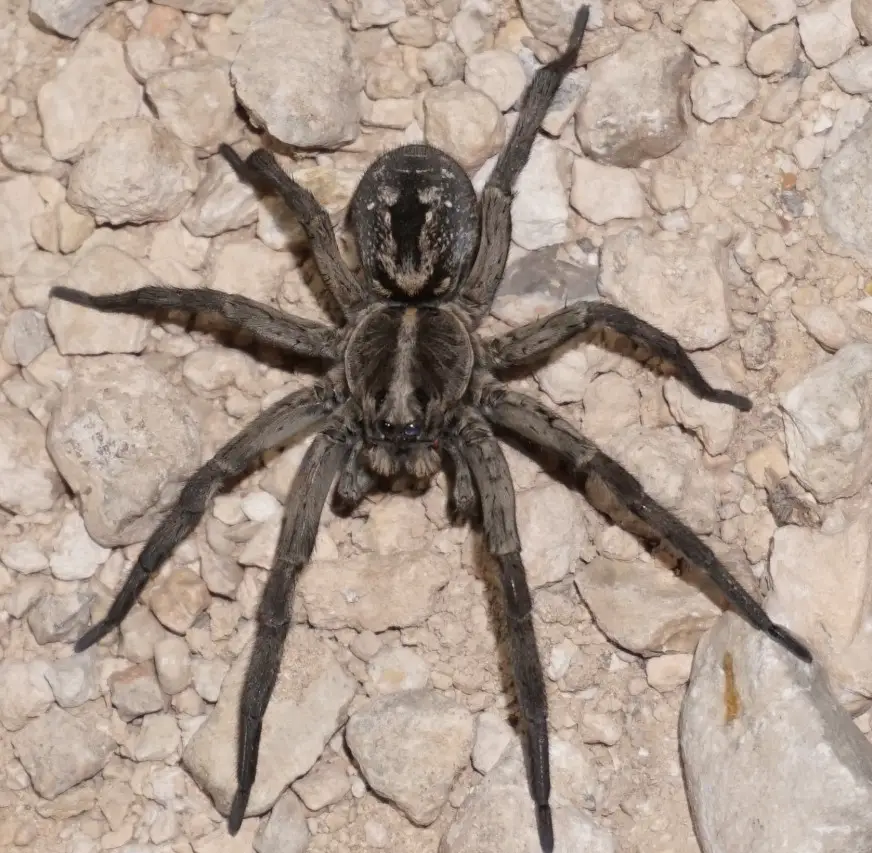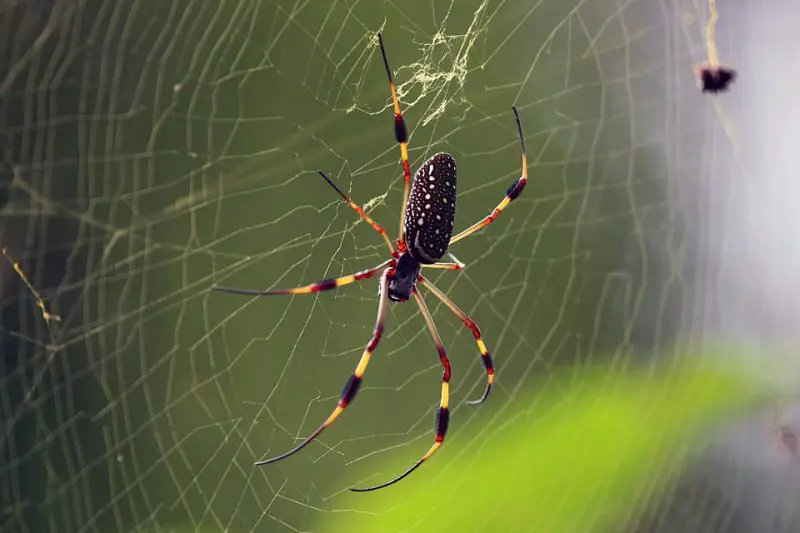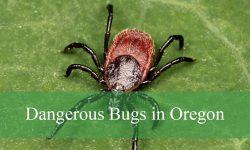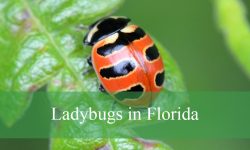Although many spiders in Mississippi are tiny and escape notice, certain species achieve extraordinary sizes, leading people to recognize them as “giant spiders.” Their size and appearance can be intimidating, but in reality, these spiders are fascinating and beneficial members of local ecosystems. Learning how to recognize them, understanding their behavior, and knowing how to protect yourself when encountering them will help you replace fear with knowledge and respect.
For people living in or visiting Mississippi, large spiders can be seen both outdoors and indoors depending on the species. Some are hunters that actively pursue prey, while others are web-builders that rely on large, intricate silk traps. Some species are harmless, while others can deliver painful but rarely dangerous bites if threatened. Understanding which is which can make outdoor adventures safer and more enjoyable.
This guide will explore the largest and most noticeable spiders in Mississippi, focusing on their physical traits, natural history, and interactions with humans. It will also cover safety precautions so that you can avoid unnecessary risks while appreciating these fascinating arachnids.
The Role of Giant Spiders in Mississippi’s Ecosystem
Despite their reputation, giant spiders play a crucial role in maintaining balance in Mississippi’s environment. They are natural pest controllers, feeding on mosquitoes, flies, beetles, cockroaches, and even agricultural pests that would otherwise thrive unchecked. By reducing insect numbers, they indirectly help humans by limiting pest-related diseases and crop damage.
Large spiders also provide an important food source for other animals. Birds, reptiles, amphibians, and small mammals rely on them as part of their diet. Without spiders, food chains would weaken, leading to ecological imbalance. Their presence is therefore essential for a healthy and functioning ecosystem.
For humans, giant spiders may be startling, but they rarely pose real danger. Most of Mississippi’s large species are not aggressive and prefer to avoid confrontation. Instead of fearing them, people can benefit from understanding their roles and recognizing the difference between a potentially harmful bite and a harmless encounter.
Recognizing Giant Spiders in Mississippi
Identifying giant spiders requires attention to detail. Factors such as size, color, body shape, eye arrangement, and habitat can help distinguish one species from another. Unlike smaller spiders, these large varieties are often visible without close inspection, making them easier to study and recognize. Some, like wolf spiders and fishing spiders, are active hunters, while others, like orb-weavers, rely on stationary webs. A few, such as huntsman spiders and tarantulas, may wander into human spaces, surprising homeowners but rarely causing harm.
The following sections describe the most notable large spiders you might encounter in Mississippi, highlighting how to recognize them and what makes each species unique.
Wolf Spider (Hogna carolinensis)

The Carolina wolf spider is one of the most iconic large spiders in Mississippi and holds the title of the largest wolf spider species in North America. Females can grow to over an inch and a half in body length, with leg spans stretching up to four inches, giving them an imposing appearance when encountered. Their bodies are covered in coarse hairs and are usually brown or gray with darker stripes or patterns that provide camouflage against soil and leaf litter. One of their most distinguishing features is their eye arrangement, with a pair of large, forward-facing eyes that reflect light, making them easy to spot with a flashlight at night.
Wolf spiders are ground-dwelling hunters that do not build webs to catch prey. Instead, they rely on their speed, strength, and excellent vision to chase down insects. They are primarily nocturnal, prowling open spaces at night while remaining hidden during the day. Females are particularly fascinating because they carry their egg sacs attached to their spinnerets and, after hatching, allow hundreds of spiderlings to ride on their backs until they can survive on their own. This display of maternal care is rare among spiders and makes the wolf spider a standout species.
In Mississippi, wolf spiders can be found in a variety of environments, including fields, forests, backyards, and even inside sheds or garages. Despite their intimidating size, they are not aggressive toward humans and will usually run away when disturbed. Bites are rare and generally occur only when the spider is trapped or handled roughly.
Golden Silk Orb-Weaver (Trichonephila clavipes)

Among Mississippi’s most spectacular spiders is the golden silk orb-weaver, often called the banana spider. Females are dramatically larger than males, with long, slender legs and a body length of up to an inch and a half. Their bright yellow and black patterns make them easy to identify, and their enormous webs are often strung across trails, garden edges, or forest clearings. The silk itself has a golden sheen when sunlight strikes it, making the webs stand out in the right light.
Golden silk orb-weavers build webs that can measure several feet in diameter, capable of capturing large insects such as dragonflies, cicadas, and moths. Their feeding strategy is patient, as they sit at the center of their web, waiting for vibrations that signal trapped prey. While their size and web-building abilities may appear intimidating, these spiders are docile and rarely pose any threat to humans. Even when disturbed, they prefer to flee rather than bite.
One fascinating fact about golden silk orb-weavers is the strength of their silk. It has been studied extensively for potential use in medicine and technology because of its remarkable combination of strength and flexibility. In Mississippi, these spiders are most noticeable during late summer and autumn when their webs are at their peak size. Encountering one of their golden webs along a hiking trail is a memorable reminder of the complexity and beauty of Mississippi’s natural habitats.
Fishing Spider (Dolomedes spp.)

Fishing spiders are another group of giant spiders that can be found in Mississippi, especially near rivers, lakes, and wetlands. Some species can reach leg spans of up to six inches, rivaling even tarantulas in overall size. Their bodies are typically brown or gray with darker markings, and they have long, sturdy legs adapted for moving across both land and water surfaces.
These spiders are semi-aquatic hunters that do not rely on webs to catch prey. Instead, they use their ability to walk on water, thanks to surface tension, to stalk insects and even small fish or tadpoles. Some individuals have been observed diving beneath the water’s surface to ambush prey, holding trapped air bubbles to breathe underwater temporarily. Their hunting style is one of the most unique among spiders, making them a fascinating species to observe.
In Mississippi, fishing spiders thrive in marshes, ponds, and along stream banks where water provides both camouflage and hunting opportunities. They are not aggressive toward humans, though their size may make them appear threatening. A bite, while painful, is not considered medically significant. Seeing one glide across the water on a summer evening is a surreal experience that highlights the adaptability of spiders to diverse environments.
Huntsman Spider (Heteropoda venatoria)

The huntsman spider, sometimes called the giant crab spider due to its sideways stance and flattened body, is a species that often startles homeowners when it enters houses. With leg spans of up to five inches, huntsman spiders are undeniably impressive in size. Their bodies are usually light brown or gray, with long, thin legs designed for speed and agility.
Unlike orb-weavers, huntsman spiders do not spin webs to catch prey. Instead, they actively roam in search of insects, often invading indoor spaces where food sources like cockroaches are abundant. Their flattened bodies allow them to hide in narrow crevices and move quickly across walls and ceilings, which can surprise anyone who encounters them. Despite their alarming appearance and speed, huntsman spiders are not aggressive and bites are rare.
An interesting fact about huntsman spiders is their ability to climb smooth surfaces and even ceilings with ease. This skill, combined with their speed, makes them excellent hunters but also explains why they are often seen scurrying across walls indoors. In Mississippi, they are more common in warmer months and can be considered beneficial house guests because of their role in reducing indoor insect populations.
Texas Brown Tarantula (Aphonopelma hentzi)

Although not as common as other species, the Texas brown tarantula can occasionally be found in Mississippi, particularly near its western borders. This species is one of the largest native tarantulas in the United States, with females reaching body lengths of two inches and leg spans of up to six inches. Covered in dark brown hairs, they have a rugged and imposing appearance that makes them instantly recognizable.
Tarantulas are primarily nocturnal and live in burrows, emerging at night to ambush insects, small reptiles, or amphibians that come too close. They are patient hunters, waiting silently until the perfect moment to strike. Despite their size, they are generally docile and non-aggressive toward humans. Their bites are rare and less harmful than a bee sting.
One of the most fascinating aspects of tarantulas is their longevity. Females can live for two decades or more, while males typically live for several years. Their slow growth and extended lifespan make them one of the most remarkable arachnids in Mississippi. Spotting one in the wild is rare but unforgettable, especially during warm summer nights when they are most active.
How to Protect Yourself Around Giant Spiders
Although Mississippi’s giant spiders are rarely dangerous, it is always wise to exercise caution. The simplest way to avoid unwanted encounters is to give them space and avoid handling them directly. When working outdoors in gardens, woodpiles, or sheds, wearing gloves can prevent accidental bites. Inside homes, spiders can be safely removed using a jar and cardboard rather than being killed, allowing them to continue playing their ecological role outside.
For hikers and campers, paying attention to surroundings is essential. Golden silk orb-weavers often build their webs across paths, so watching carefully when moving through wooded areas can prevent walking directly into one. Near streams or ponds, keeping an eye on the water’s edge can reveal the presence of fishing spiders. Awareness and respect are the best forms of protection.
Coexisting with Giant Spiders in Mississippi
Learning to live alongside giant spiders begins with understanding that they are more beneficial than harmful. They help control pests, provide food for other wildlife, and play important ecological roles. Encouraging this mindset reduces fear and promotes appreciation of Mississippi’s biodiversity.
For homeowners, preventing indoor spider encounters can be as simple as sealing entry points, reducing clutter, and keeping indoor insect numbers low. Outdoors, maintaining gardens and avoiding unnecessary pesticide use can create a balanced environment where spiders thrive without posing a threat. Coexistence is not only possible but also beneficial for both humans and nature.
FAQs about Giant Spiders in Mississippi
Are giant spiders in Mississippi dangerous to humans?
Most giant spiders in Mississippi are harmless to humans. While bites are possible, they are rare and usually occur only when the spider feels threatened. Even the largest species, such as tarantulas, do not pose serious medical risks.
Where am I most likely to see giant spiders in Mississippi?
Wolf spiders are often seen on the ground in fields and forests, golden orb-weavers are common in wooded trails, fishing spiders stay near water, huntsman spiders may enter homes, and tarantulas are occasionally found in rural areas.
How can I tell the difference between a wolf spider and a fishing spider?
Wolf spiders have more robust, hairy bodies and are primarily land hunters, while fishing spiders are semi-aquatic, slimmer, and often found near ponds, rivers, or wetlands.
Should I kill a giant spider if I find one indoors?
Killing is unnecessary, as most giant spiders are harmless and help control pests. The best approach is to gently trap the spider in a container and release it outside.
Do tarantulas really live in Mississippi?
While not common, the Texas brown tarantula can be found in parts of Mississippi, particularly in the western regions near its natural range.
Conclusion
Giant spiders in Mississippi may inspire fear at first glance, but they are remarkable creatures that deserve recognition and respect. From the powerful wolf spider and the dazzling golden silk orb-weaver to the aquatic fishing spider and the rare tarantula, each species adds to the state’s ecological richness. By learning to identify them, understanding their behaviors, and practicing simple safety measures, people can protect themselves while also appreciating the roles these spiders play in nature.
Rather than being symbols of danger, Mississippi’s giant spiders stand as reminders of the complexity and beauty of the natural world. Observing them is not only safe when done with caution but also rewarding, offering insight into the delicate balance of life that surrounds us.






